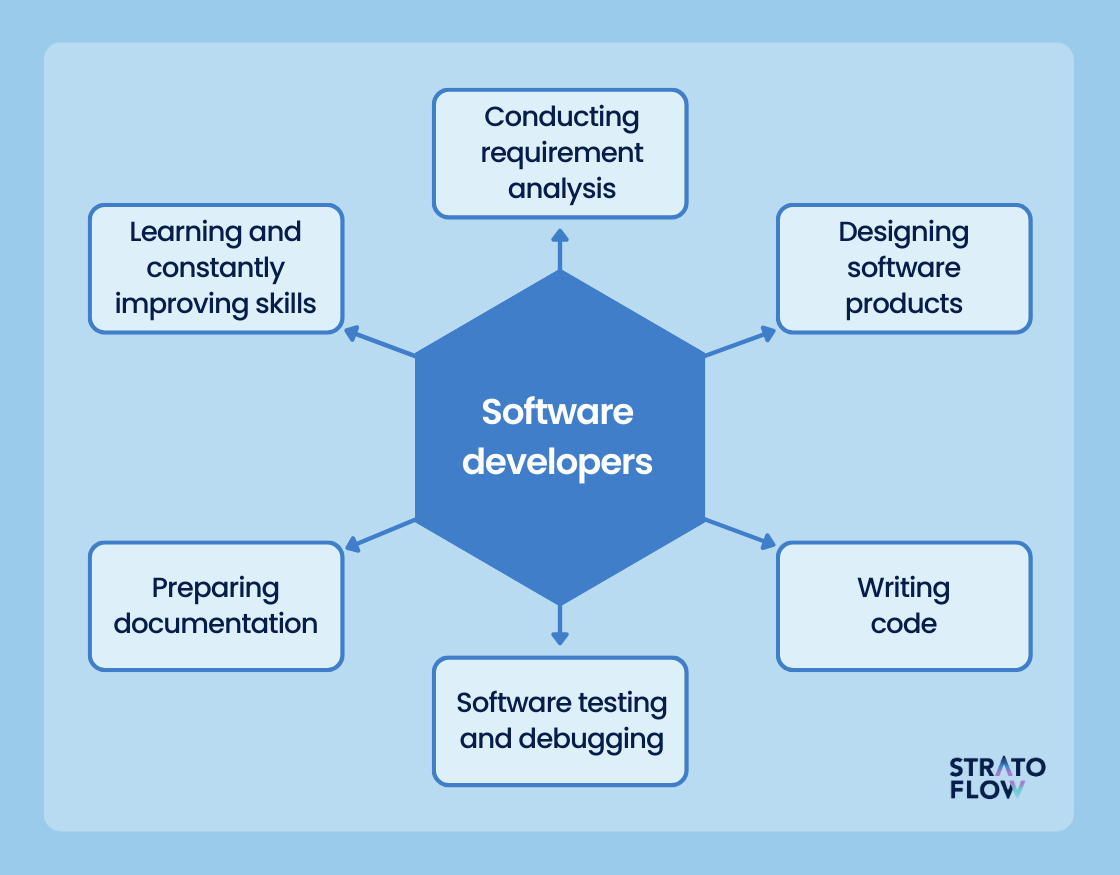Discovering the Ideal Software Development Partner for Innovative Solutions
Wiki Article
Committed Developers vs. In-House Teams: Which Is Right for You?
The choice in between utilizing devoted designers and maintaining an in-house group is a significant one that can affect the trajectory of your tasks and overall service method. Alternatively, in-house groups contribute to a natural firm culture and a nuanced understanding of long-term goals.Comprehending Committed Designers
The expanding need for specialized abilities in the tech market has brought about the development of committed designers as a practical service for lots of organizations. These specialists are normally acquired on a job basis, permitting business to utilize certain knowledge without the long-term dedication related to permanent hires. Committed developers are typically embedded within a client's group, giving adaptability and scalability to fulfill job demands.This model enables organizations to access a worldwide skill swimming pool, which is particularly advantageous in a rapidly advancing technological landscape. Devoted designers can be sourced from various geographical locations, making sure that business can find the right ability at affordable prices. They often bring a wide range of experience and expertise, having dealt with varied tasks throughout different industries.
Additionally, dedicated designers can concentrate specifically on the jobs handy, enhancing productivity and efficiency. They are geared up to integrate perfectly into existing workflows, collaborating very closely with in-house teams to attain task goals. This method not only minimizes the problem of recruitment and training however also allows companies to continue to be agile, adjusting rapidly to changing market demands and technical improvements.
Benefits of In-House Teams

Furthermore, internal teams often tend to have a much deeper understanding of the company's objective, worths, and objectives. This placement can boost employee interaction and inspiration, as group members really feel much more linked to their work and the company's success. Additionally, having a committed internal team enables better placement of techniques and objectives, as these members are consistently focused on the business's concerns.
Internal teams also facilitate quicker decision-making procedures, as they can react more swiftly to obstacles and modifications. The recognized partnerships and familiarity with company procedures permit structured operations and decreased miscommunication. Eventually, the combination of a cohesive culture, placement with business objectives, and reliable communication makes in-house teams an important property for several companies, especially those seeking to cultivate long-lasting growth and development.
Price Considerations
When assessing cost considerations, both internal groups and dedicated developers present unique monetary effects for organizations. Engaging dedicated developers normally includes a pay-per-project or per hour rate version, which can be cost-efficient for businesses with varying job needs. This technique permits adaptability in scaling resources up or down, ensuring that companies only pay for the solutions they need.On the other hand, in-house groups involve dealt with expenses, including wages, advantages, and overhead expenditures such as workplace and devices. While this model uses better control and prompt availability of resources, it might bring about greater long-lasting expenditures, especially if the workload does not justify a full-time personnel.
Furthermore, companies should think about the covert prices associated with recruitment and training of internal employees, which can additionally strain budget plans. In many cases, the time and resources spent on handling an internal team can interfere with the organization's core software development technologies service goals.

Project Administration and Flexibility
Project administration and versatility are crucial aspects that affect the choice in between committed programmers and internal teams. Dedicated teams typically have actually developed processes for taking care of projects efficiently, leveraging specific approaches like Agile or Scrum, which help with repetitive progression and versatility.
Eventually, the choice in between in-house groups and committed programmers depends upon the preferred degree of flexibility and the particular task administration requirements. Business should assess their operational characteristics, project intricacy, and source availability to determine which choice straightens best with their tactical purposes.
Making the Right Choice
Selecting the best growth approach-- in-house teams or specialized programmers-- requires a mindful assessment of numerous aspects that line up with a business's critical goals. Conversely, in-house teams can provide much better continuity and integration with existing workers.Next, review your budget plan. Dedicated designers typically offer a cost-effective service for temporary jobs, while in-house groups might sustain greater long-term costs as a result of incomes, advantages, and expenses expenses. Assess the level of control and cooperation desired; internal teams typically cultivate stronger interaction and alignment with company society.
If prompt results are needed, dedicated programmers can be onboarded rapidly, whereas constructing an internal group takes time for recruitment and training. If continuous development is vital, spending in an in-house group may produce far better returns over time.
Verdict
Finally, the choice in between in-house teams and committed developers hinges on job requirements and organizational goals. Committed developers supply versatility and specialized expertise, making them appropriate for short-term initiatives. Conversely, internal teams grow a cohesive society and much deeper alignment with long-lasting objectives. Cautious evaluation of budget restrictions, project timelines, and preferred control degrees is necessary for determining one of the most suitable sw engineer technique, guaranteeing alignment with calculated priorities and functional efficiency.The decision in between using specialized designers and preserving an internal group is a substantial creative travel website design one that can affect the trajectory of your tasks and total business approach.Job management and flexibility are critical aspects that affect the choice between committed designers and in-house teams. dedicated development team.In contrast, in-house groups may excel in preserving a constant project monitoring structure due to their familiarity with the company's society and lasting goals. Dedicated developers frequently offer a cost-efficient option for temporary jobs, while in-house teams may incur higher long-term expenditures due to incomes, benefits, and overhead costs.In conclusion, the choice between in-house teams and devoted programmers hinges on project demands and organizational purposes
Report this wiki page